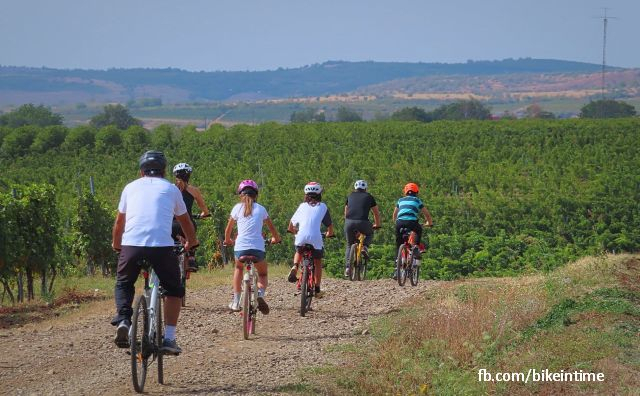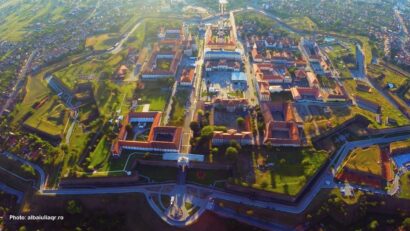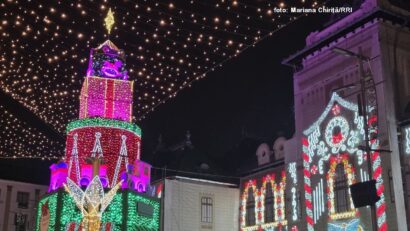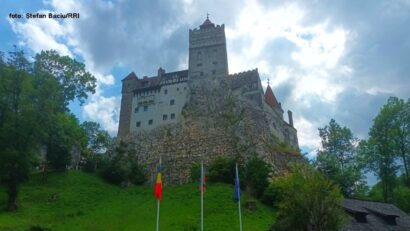Cycle tourism in Romania
The most popular area for cycle tourism is Transylvania

Daniel Onea, 05.06.2025, 13:44
The most popular area for cycle tourism is Transylvania, and from a logistical point of view, it is also the most developed area. However, the best impressions are left by Maramures and the Danube. The 2025 offer includes the “Gravel Tour”, a tour dedicated to cyclists who use bicycles for unpaved roads. Romania, with many unpaved, agricultural, forestry, and municipal roads, has become a destination for this category of cyclists. Also, the “Bike and Photo Tour” is a standard or personalized tour for cyclists passionate about photography. It is a less common addition, but it is the novelty of 2025.
We discover the charm of a cycling holiday with Ionuț Maftei, the director of a tourism company and, above all, a tour guide.
“The first tour I would like to talk about, because it is increasingly popular, includes bicycles that are called gravel, that is, those that go on rather unpaved roads. Because we have such roads, that is, about half of the roads in Romania are not paved, we suddenly became a target for this type of cyclotourism, gravel cycling. We have a tour that is called “Gravel bike in Romania” and especially through the wilderness of Romania. This is one of the attractions that we have. Anyway, we were going on secondary and unpaved roads, but because this type of tourism has taken shape and is increasingly popular, we had to have a tour that we could basically rename like this. The standard one takes place in the Transylvania area, which is also the most desired area, but all our tours can be customized, so we can do them wherever there are unpaved roads.”
The last such tour that Ionuț Maftei did was in the area of fortified churches in Transylvania, where there are also many marked bicycle routes. The second proposal involves an interesting combination of bicycles and photography.
“Anyway, all tourists take photos when they go somewhere on vacation, but from a bicycle, you see much more things than from a car. So, we wanted to combine cycling with photography, and we want to promote a pure experience that combines these two things: we visit places by bicycle, but we focus especially on looking for objectives for photographers. We don’t expect there to be a big wave of bicycle tourist photographers from the beginning, but we thought of having something like this in our portfolio, either for the future or as a niche, if it develops. Basically, we stop quite often with our bicycles precisely to take photos. Especially when it comes to fauna, you have to be quite careful and on the lookout, but we also have objectives that are plants, buildings and we think that such a tour is welcome. It is an example that we have taken from other agencies outside Romania and we will see how it will behave here. The Transfăgărășanul, for example, is a quite appreciated area for something like this.”
The Danube area is ideal for cycling tourism, and Ionuț Maftei, the director of a travel agency and tour guide, is involved in the development of infrastructure for cyclists in Romania.
“We participated in several projects, we also made a strategy for the development of cycle tourism. The National Recovery and Resilience Plan also included a part for the development of cycle tourism infrastructure, namely the arrangement and marking of approximately 3,000 km of roads for cyclists. We were responsible for the evaluation according to the European certificate of a 365 km segment. We liked this number. It would be one km per day. The area is between Drobeta Turnu Severin and Corabia. It is also the most complicated part of the Danube, because there are not many accommodations there, there is not much forest. A day in this area can become quite unpleasant if it is hot and if you also have problems with the bike, it is possible that it will become a somewhat dangerous day. So we want to implement some more imposed break areas there, some shaded areas, some water springs, some wells that would be drilled. We would like to promote more, and this area, especially since it is also part of EuroVelo 6, the route that connects the Atlantic Ocean to the Black Sea.”
It is good to know the bike we are going to ride, to know how far we can go and to be informed about the road we are going to take, says Ionuț Maftei.
“We provide assistance especially on the Romanian side of the Danube for tourists who want to travel the Danube route. Compared to previous years, when there was almost no activity, tourists come to ask for information about accommodation, which we are still quite deficient in. Back then, we had to do our own research so that we could identify some cyclist-friendly accommodation or other facilities for cyclists, and also establish the routes according to the bikes. There are some cycle tourists who have road bikes, but there are some who have bikes, either gravel or tracking, and they can even go on the Danube embankment, which is a very beautiful area. Part of that area, where possible, will be marked as the EuroVelo 6 route.”
Starting from the infrastructure side, Ionuț Maftei, a tour guide and director of a travel agency, says that he has been working on another interesting project for two years.
“We noticed that we lack certifications for accommodations, restaurants or tourist attractions that are friendly to cyclists. We brought the first “cycling friendly” certification, for those who want to promote themselves as a destination for cyclists. It is not something new. It exists in Europe, but it does not exist in Romania. Basically, we offer this certification, which is quite easy to obtain, to all accommodations, restaurants or tourist attractions that offer good conditions for cyclists. They must keep their bicycles safe, visit the destination safely, receive additional services or help where they need it. Help means, if they want to repair their bicycle, to have a small tool kit. They must also be able to wash their bicycle. This project is called Velo Popas. We hope to fill the map of Romania with bike-friendly spots.”
Another project combines pedaling with visiting and tasting in wineries. It’s called “Velodrumul vinului,” the wine road by bike. So, no matter where you want to visit, if you want to venture out on two wheels, Romania is becoming increasingly suitable for cycle tourism.






























